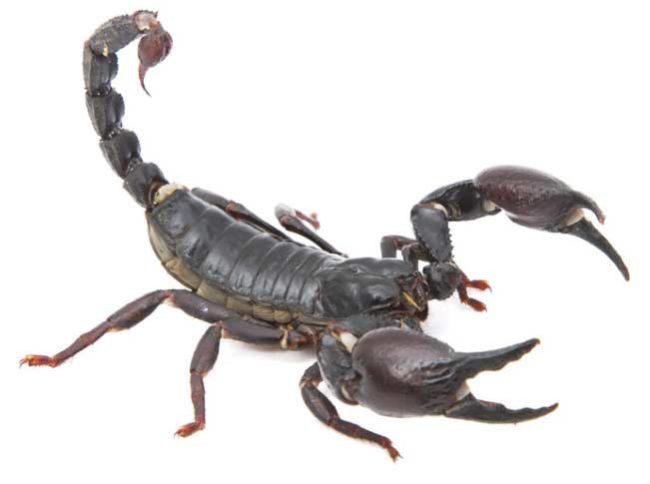By Tina Mitchell
The dog stood still as a statue, nose to the floor. Maybe he was watching an insect. But usually he’d just check it out and move on or else snarf it down. This behavior was different. Curious, I walked over. Uh, oh – the boy had zeroed in on a scorpion. A first for us both. But over our 15 years in that house, we found a number of scorpions inside, especially in the winter. We eventually realized that most arrived on the firewood we stacked near the woodstove. When we moved the stack to the garage, the number of winter-visiting scorpions dropped.
Scorpions fall in the class Arachnida, making them distant cousins of spiders. Some people think that arachnids are insects – not so. Insects have six legs and three body segments (head, thorax, abdomen) while arachnids have eight legs and two body segments (cephalothorax – a combined head and thorax – and abdomen). Three species of scorpions call Colorado home; the most common one in central Colorado is the striped bark scorpion (Centruroides vittatus). In fact, the striped bark scorpion is the most common species in the U.S. It grows to 2.75 inches long, with two dark stripes down the length of its back. A scorpion has an elongated abdomen that ends with its signature stinger, often curled over its back. Its enlarged appendage-like pedipalps on the cephalothorax form claws for grasping prey. Also on the cephalothorax is a pair of simple eyes at the midline and 2–5 pairs along each side. Its light tan or yellow color suits its environment well, providing natural camouflage from both prey and predators. C. vittatus has a very dynamic diet, including fast-moving insects and smaller arachnids. In turn, it finds itself on the menus of birds, reptiles, some mammals, and even larger arachnids.

